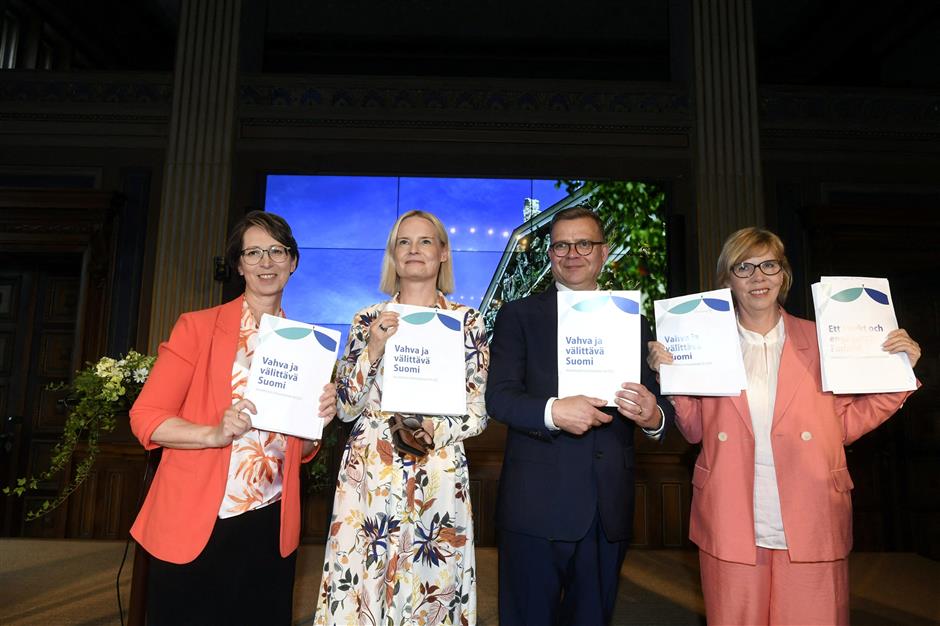Background and Legislative Process
Timeline of the Policy Development
The journey toward this policy began in September 2023, when the Ministry of Economic Affairs and Employment initiated preparations for legislative amendments to tighten the monitoring of work-based residence permits. This move was part of a broader agenda by the right-wing four-party alliance government, which took office in 2023 and announced a program to overhaul immigration, residence, and citizenship laws.
In June 2024, the Ministry sent a draft proposal for the cancellation of work-based permits after three months of joblessness for public consultation. The feedback period allowed stakeholders, including businesses, labor unions, and civil society organizations, to voice their concerns. Despite significant opposition, the government finalized the proposal and submitted it to parliament in October 2024. The parliament approved the amendments, paving the way for the law’s implementation in June 2025.
Raising the Income Threshold
Alongside the joblessness clause, the government introduced another significant change in September 2023: increasing the income threshold for work-based residence permits from €1,331 to €1,600 per month. This adjustment aims to ensure that foreign workers contribute to the economy at a higher income level, aligning with the government’s goal of prioritizing high-skilled or financially stable immigrants. However, this change has raised concerns about its impact on low-wage sectors, such as hospitality and agriculture, which rely heavily on foreign labor.
Motivations Behind the Policy
Economic and Labor Market Considerations
Finland, like many developed nations, faces a dual challenge: addressing labor shortages in key sectors while managing public concerns about immigration. The new law reflects the government’s attempt to balance these priorities. By allowing permit holders to switch to labor shortage sectors, the policy aims to address gaps in industries such as healthcare, technology, and construction, where skilled workers are in high demand. The six-month job-seeking period for specialists and long-term residents further underscores the government’s recognition of the need to retain skilled talent.
However, the three-month limit for most workers suggests a focus on reducing the number of unemployed foreign workers who remain in the country. The government argues that this measure will incentivize rapid reemployment and prevent the misuse of residence permits. Critics, however, contend that the short timeframe may disproportionately affect low-skilled workers, who often face greater challenges in securing new employment quickly.
Political and Social Context
The four-party alliance, led by the National Coalition Party and including the Finns Party, has faced pressure from its conservative base to adopt stricter immigration policies. The Finns Party, in particular, has long advocated for tighter controls on immigration, citing concerns about cultural integration and economic competition. The new law aligns with this agenda, reflecting a broader trend of right-wing governments across Europe tightening immigration policies in response to populist sentiments.
Public opinion in Finland is divided. A 2024 survey by the Finnish Institute of International Affairs found that 52% of Finns support stricter immigration policies, while 38% believe that immigration is essential for addressing labor shortages and supporting economic growth. This polarization has fueled protests, with hundreds demonstrating in Helsinki on June 18, June 27, and August 25, 2024, against the government’s immigration reforms.
Opposition and Criticism
Academic and Institutional Pushback
The policy has drawn sharp criticism from academic leaders and institutions. Sari Lindblom, Rector of the University of Helsinki, and Ilkka Niemelä, President of Aalto University, have publicly opposed the tightening of immigration policies. In a joint statement, they argued that restrictive measures could undermine Finland’s ability to attract and retain international talent, particularly in academia and research-driven industries.
“Finland’s competitiveness in the global knowledge economy depends on our ability to attract skilled professionals. Policies that create uncertainty for international workers risk driving talent to other countries,” said Lindblom and Niemelä in June 2023.
Their concerns are grounded in Finland’s reliance on foreign researchers and students. According to Statistics Finland, international students make up 10% of university enrollment, and many stay to work in high-skill sectors after graduation. The new law’s strict timelines could deter these individuals from remaining in Finland, potentially weakening the country’s innovation ecosystem.
Protests and Public Backlash
The government’s immigration reforms have sparked significant public unrest. Demonstrations in Helsinki in June and August 2024 saw hundreds of people, including immigrants, students, and labor advocates, protesting the tightening of residence permit rules. Protesters argued that the policies unfairly target vulnerable populations, such as low-wage workers, and could exacerbate social inequalities.
Labor unions, such as the Central Organization of Finnish Trade Unions (SAK), have also voiced concerns. They argue that the three-month job-seeking limit is unrealistic, particularly in sectors with seasonal or unstable employment. The SAK has called for a more flexible approach, suggesting a minimum of six months for all workers to ensure fair opportunities to find new employment.
Potential Impacts of the New Law
Economic Implications
The new law could have far-reaching effects on Finland’s labor market. On one hand, the ability to switch to labor shortage sectors may help address critical gaps in industries like healthcare, where Finland faces a projected shortage of 15,000 nurses by 2030, according to the Finnish Nurses Association. By streamlining the process for workers to move into high-demand fields, the policy could enhance labor market efficiency.
On the other hand, the three-month job-seeking limit may discourage foreign workers from coming to Finland, particularly those in low-wage or precarious jobs. Sectors such as agriculture, cleaning, and hospitality, which rely heavily on immigrant labor, could face recruitment challenges. A 2023 report by the Ministry of Economic Affairs and Employment noted that 20% of workers in these sectors are foreign nationals, highlighting their importance to the economy.
Social and Cultural Impacts
The policy may also affect Finland’s social fabric. Stricter immigration rules could exacerbate feelings of exclusion among immigrant communities, potentially hindering integration efforts. A 2024 study by the University of Turku found that immigrants who feel secure in their legal status are more likely to participate in community activities and invest in long-term integration, such as learning Finnish or Swedish. The threat of permit cancellation after three months could create uncertainty, discouraging such engagement.
International Comparisons
Finland’s policy aligns with a broader trend of tightening immigration controls across Europe. Countries like Denmark and Sweden have introduced similar measures to limit residence permits for unemployed workers. For example, Denmark’s 2021 immigration reforms require foreign workers to secure new employment within three months or face deportation. While these policies aim to reduce unemployment among immigrants, critics argue that they disproportionately affect low-skilled workers and fail to address structural barriers to employment, such as language proficiency or discrimination.
Hidden Truths and Unintended Consequences
Administrative Burden
One overlooked aspect of the new law is the administrative burden it places on employers and the Finnish Immigration Service. The requirement for employers to notify the Immigration Service within 14 days of an employment termination adds a new layer of bureaucracy. Small businesses, which often lack dedicated HR departments, may struggle to comply, potentially leading to fines or legal challenges.
Similarly, the Immigration Service will need to process a higher volume of notifications and permit cancellations, which could strain its resources. In 2023, the agency already faced a backlog of 10,000 residence permit applications, according to internal reports. The new requirements could exacerbate delays, creating uncertainty for both workers and employers.
Impact on Vulnerable Workers
The three-month job-seeking limit may disproportionately affect vulnerable groups, such as refugees or workers from non-EU countries, who often face greater barriers to employment. Language barriers, lack of professional networks, and discrimination in hiring practices can make it difficult to secure a new job within the allotted time. A 2024 study by the Finnish Red Cross found that 40% of non-EU immigrants reported experiencing discrimination in the job market, highlighting the challenges these workers face.
Potential for Exploitation
Another hidden risk is the potential for employer exploitation. Workers with limited time to find new employment may feel pressured to accept unfavorable working conditions or lower wages to avoid permit cancellation. This could exacerbate existing issues of labor exploitation, particularly in low-wage sectors. The International Labour Organization (ILO) has warned that restrictive immigration policies can increase the risk of modern slavery, as workers may prioritize job security over fair treatment.
Research and Data Insights
Labor Market Trends
Finland’s labor market is undergoing significant changes, driven by an aging population and declining birth rates. According to Statistics Finland, the working-age population is projected to shrink by 5% by 2030, increasing the need for foreign workers to fill labor gaps. The new law’s focus on labor shortage sectors reflects this reality, but its restrictive elements may undermine efforts to attract and retain talent.
A 2024 report by the OECD highlighted Finland’s relatively low immigration rate compared to other Nordic countries. While Sweden and Norway have actively recruited foreign workers to address labor shortages, Finland’s stricter policies may make it less competitive. The report recommended that Finland adopt more flexible immigration policies to support economic growth, a suggestion that contrasts with the current government’s approach.
Public Opinion and Social Cohesion
Public opinion on immigration remains a contentious issue. A 2023 survey by Yle, Finland’s national broadcaster, found that 60% of Finns believe immigration policies should prioritize economic contributions over humanitarian considerations. However, the same survey revealed that 45% of respondents feel that immigrants are unfairly blamed for economic challenges, indicating a complex and nuanced public sentiment.
Social cohesion is another concern. A 2024 study by the University of Helsinki found that restrictive immigration policies can increase social tensions by reinforcing perceptions of immigrants as outsiders. The study recommended policies that promote integration, such as language training and community engagement programs, to mitigate these risks.
Conclusion
Finland’s new immigration policy, set to take effect in June 2025, represents a significant shift in the country’s approach to work-based residence permits. By introducing a three-month job-seeking limit and increasing the income threshold, the government aims to balance labor market needs with stricter immigration controls. However, the policy has sparked significant opposition, with critics arguing that it could undermine Finland’s ability to attract talent, exacerbate social inequalities, and create administrative challenges.
As Finland navigates these changes, the government will need to address the concerns of businesses, labor unions, and immigrant communities to ensure that the policy achieves its intended goals without unintended consequences. The coming years will be critical in determining whether these reforms strengthen Finland’s economy and social cohesion or create new challenges for its diverse workforce.
















0 Comments